iPhone Sun, Moon, Comet, Falcon 9 rocket launch
Posted: 10 May 2024
Tuesday, 7 May 2024, was clear, hazy, and windy. Wednesday, 8 May, was clear and windier. Thursday, 9 May, the sky was clear but hazy with strong wind. I viewed the Sun using my Lunt Solar Systems SUNoculars 8x32. I then took this handheld photograph of the Sun showing the large active sunspot region AR3664 and AR3668. Also visible is the much smaller sunspot AR3667. Photo taken with an iPhone 15 Pro Max (5X using the Solar Snap app).
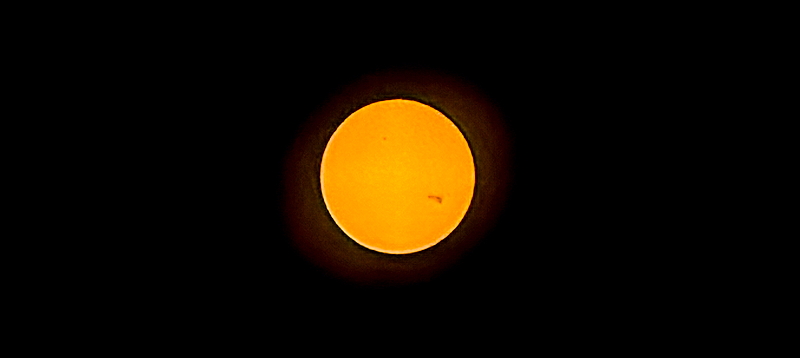
|
Open: Thursday, 9 May 2024, 1801 MST Temperature: 88°F |
Session: 1964 Conditions: Clear, hazy, windy |
Equipment:
12" f/8 LX600 w/StarLock
2" 24mm UWA eyepiece
2" 30mm eyepiece
2" 9mm 100° eyepiece
Camera:
iPhone 15 Pro Max
I opened the observatory even though it was windy. I wanted to photograph the Sun using the 12" telescope before it was too low in the western sky.
1805 MST: LX600 ON, StarLock OFF, High Precision OFF.
Attached a solar filter to the 12" telescope. Viewed the Sun, 102X. Several sunspots were visible, including the large active sunspot region AR3664 and AR3668.
I took this handheld iPhone 15 Pro Max afocal 102X image of the Sun using the Camera app (1X lens). The Sun was already behind some tree limbs.
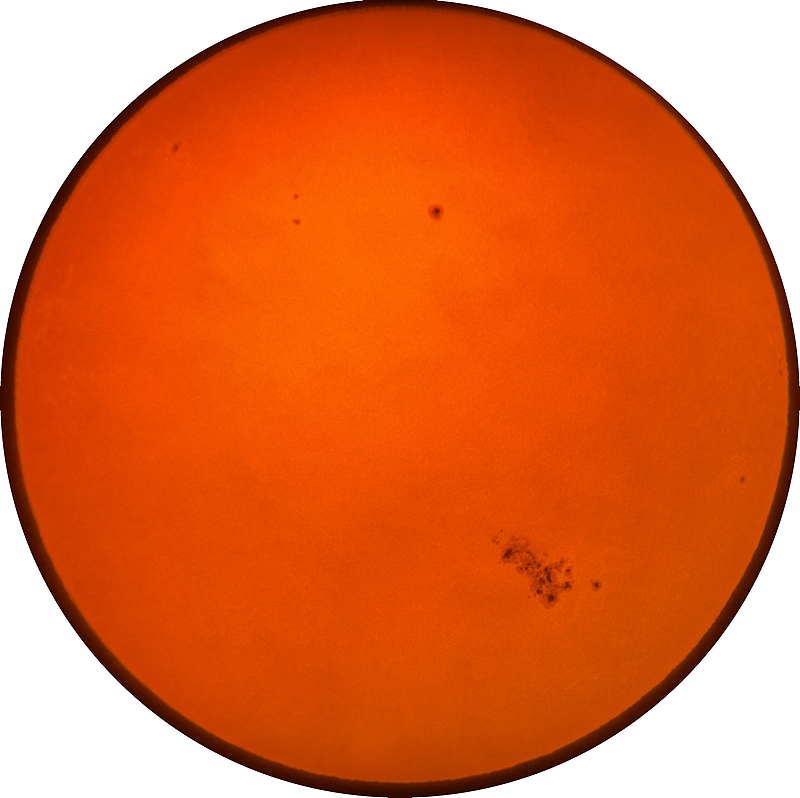
I then viewed the Sun using the 30mm eyepiece (81X). I mounted the iPhone on the 30mm eyepiece using the 3-axis adapter and took this afocal 81X image using the Camera app (1X).
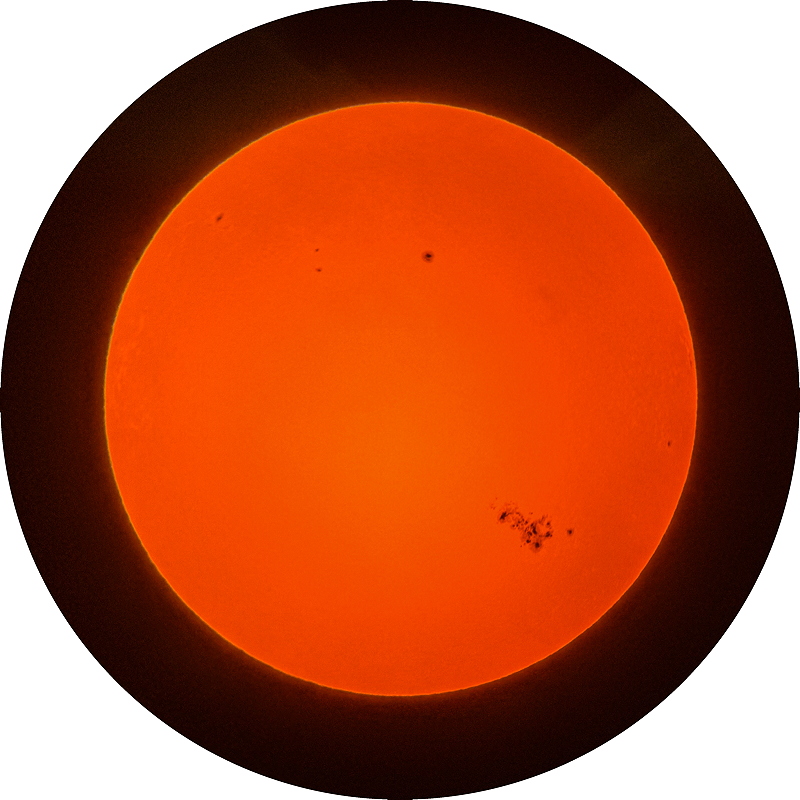
1815 MST: The Sun was now behind the tree.
1822 MST: Relaxed on the observatory patio bench to wait for the wind to calm down.
1912 MST: Back at the 12" telescope I viewed the thin crescent Moon, 102X and 81X.
1913 MST: Sunset. Calm now.
1926 MST: With the iPhone mounted on the 30mm eyepiece, took this afocal 81X image of the Moon using the Camera app (1X lens).
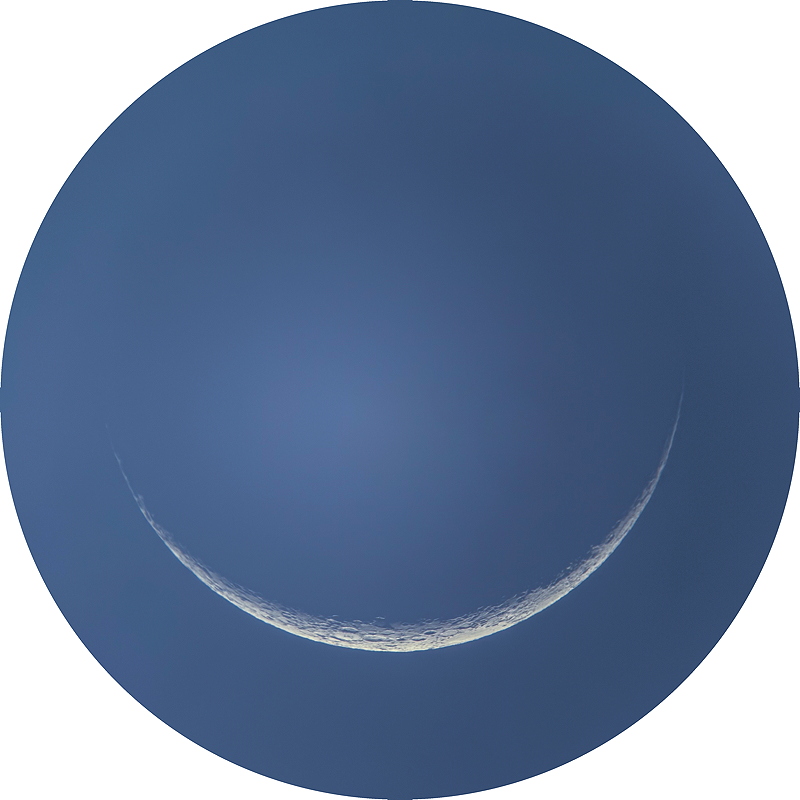
1931 MST: Back to the bench to watch the stars come out and to wait for the SpaceX Falcon 9 rocket launch from Vandenberg Space Force Base in California. It had been scheduled to launch at 2020 MST, but was soon delayed to 2130 MST.
2005 MST: iPhone Camera app (Night Mode, 3 seconds, 1X lens) photograph showing the crescent Moon with Earthshine and the observatory with the 12" telescope.
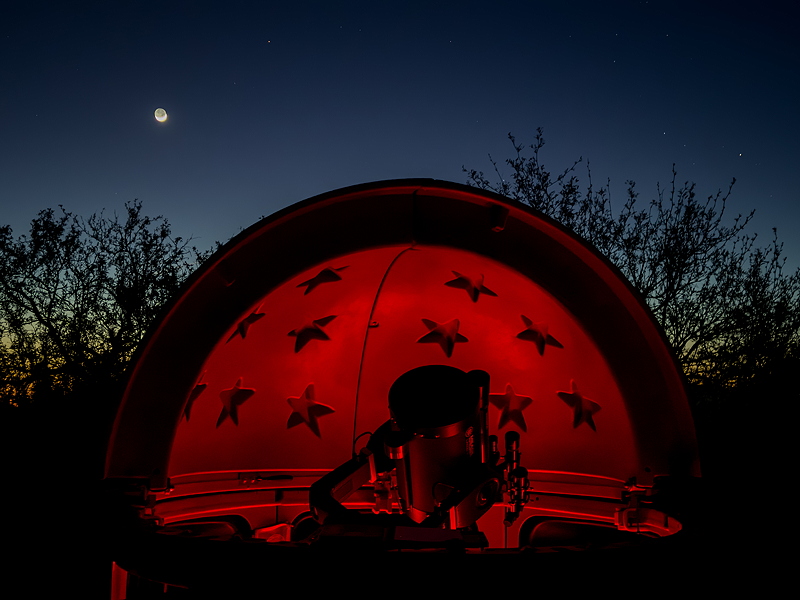
2012 MST: Back in the observatory I observed Comet Tsuchinshan-ATLAS (C/2023 A3), 102X. The comet coma and tail were visible. Then viewed the comet, 271X. Coma and tail were faintly visible at this higher magnification.
Attached the LiDAR Cover on the iPhone and mounted the iPhone on the 9mm eyepiece.
2025 MST: StarLock ON.
Took this StarLock autoguided afocal 271X image of Comet Tsuchinshan-ATLAS using NightCap Camera (Long Exposure, Light Boost, ISO 49280, 1sec, 1 minute, 1X lens).
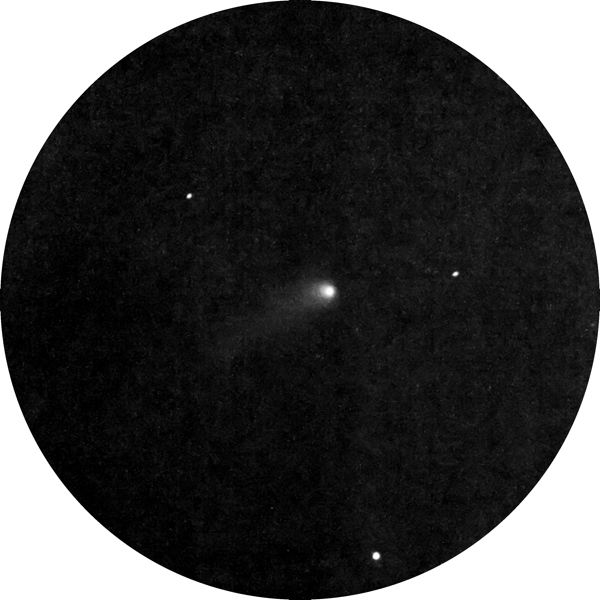
2030 MST: StarLock OFF.
Viewed the comet, 271X and 102X.
2040 MST: LX600 OFF.
|
Close: Thursday, 9 May 2024, 2045 MST Temperature: 61°F |
Session Length: 2h 44m Conditions: Clear |
2120 MST: I went outside to hopefully see and photograph the SpaceX Falcon 9 rocket launch from Vandenberg Space Force Base in California. I expected that the rescheduled launch was too long after sunset for a nice rocket exhaust plume to be visible. The launch occurred at 2130 MST.
2134 MST: I saw a faint fuzzy area in the western sky. I began taking handheld iPhone 15 Pro Max photos using the Camera app (Night Mode, 3 seconds, 2X lens). As I was taking photos, the 2nd stage rocket exhaust plume became more visible, as seen in these photos. There were some clouds in the sky.
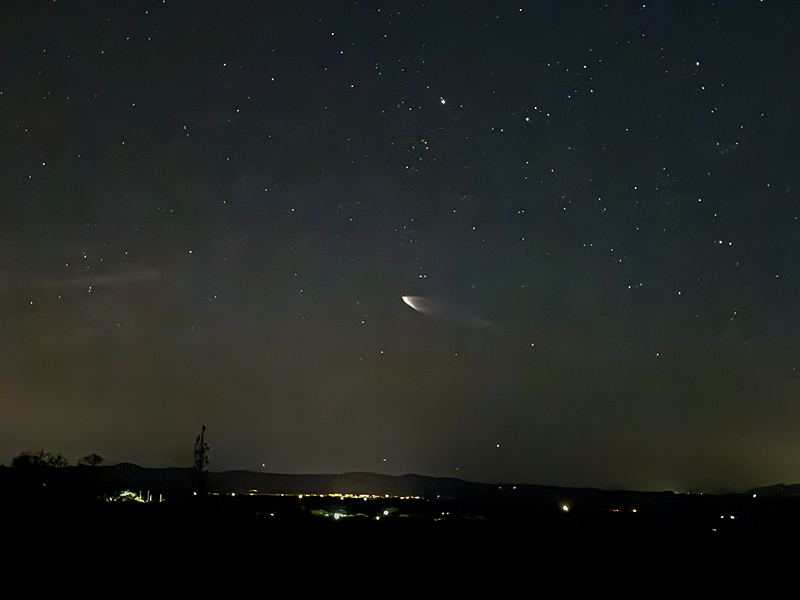
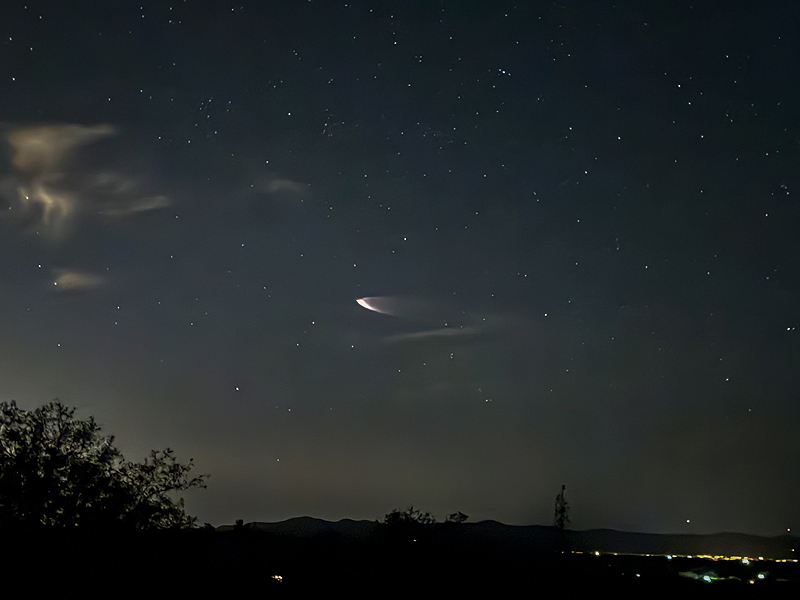
2136 MST: Saw the 1st stage re-entry burn as a very bright red glow low on the western horizon. Managed to get two iPhone photos showing the 1st stage re-entry burn as the 2nd stage continued firing.
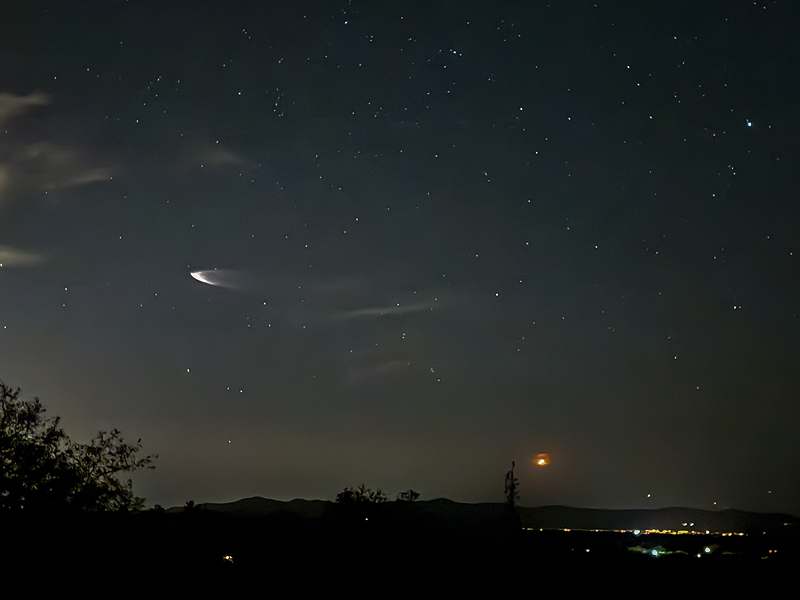
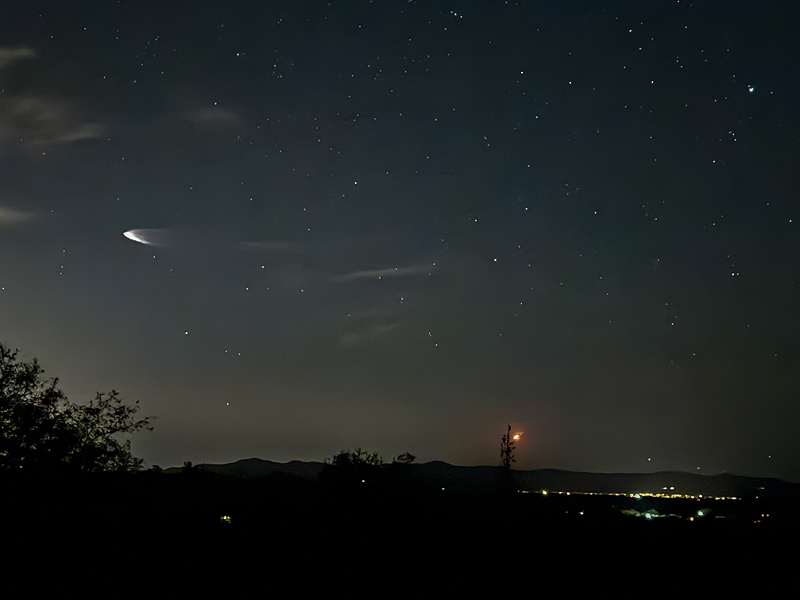
Comments are welcome using Email. Please read the Email Etiquette guidance.
Cassiopeia Observatory Home Page
Copyright ©2024 Michael L. Weasner / mweasner@mac.com.
URL = http://www.weasner.com/co/Reports/2024/05/10/index.html
